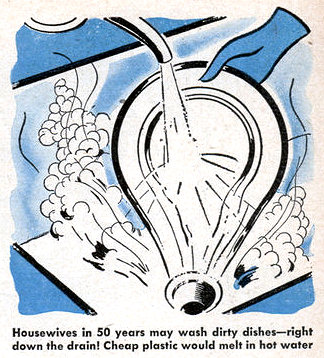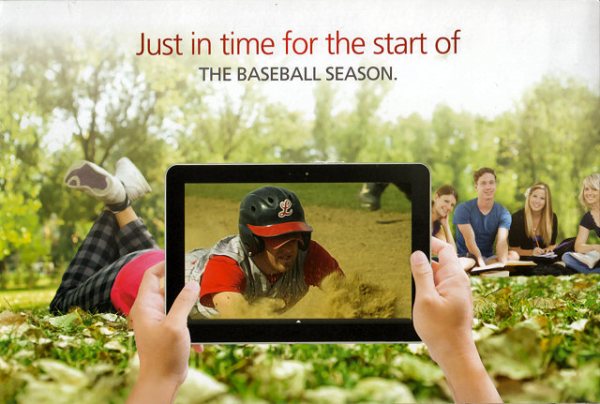This speech is the sequel to The Unexpected Benefits Of Toastmasters. In it, my father recommended that I join Toastmasters, but didn’t tell me why. It was up to me to discover the benefits.
 In that speech, I mentioned that new members regularly approach me to say that they have trouble coming up with speech ideas, and ask me for advice. I’d like to add to the advice in that speech and explain in detail, my idea cultivation and generation process for my Toastmasters speeches and my blog articles.
In that speech, I mentioned that new members regularly approach me to say that they have trouble coming up with speech ideas, and ask me for advice. I’d like to add to the advice in that speech and explain in detail, my idea cultivation and generation process for my Toastmasters speeches and my blog articles.
The Phases of Speech Writing
During the five years that I’ve been with my club, I’ve identified three distinct phases to speech writing as one progresses through the projects and manuals.
Years ago, I used to take karate classes. Like most people, I thought that as the students progressed through the various belt colours, their ultimate goal was reaching the black belt level. I assumed that after attaining one’s black belt, a student had completed the training. However, Sensei (our instructor) had a much broader view. He explained that the belt colours were just the beginning of our training, and meant that we were merely learning the basics. Achieving a black belt level meant that we had learned the rudimentary skills and were now ready to explore the “art” aspect of the martial arts. That was the point at which where the real learning, development and even enlightenment began.
Toastmasters works in a similar way, and I’ve noticed the following pattern among almost all club members: you begin with yourself, and then your gaze slowly extends outward. New Toastmasters begin talking about themselves in their Icebreaker speech, and then progress to speaking about their family, kids, pets and hobbies; then they might also talk about their vacations and the other places they’ve traveled. Others may put an educational spin on their topic and teach us a little about different countries, their cultures and their traditions. This is the first phase of speech writing, and this is what I call the “getting to know each other” phase.
After about 12-18 months, once the members have learned a lot about each other through their speeches, a shift seems to take place in the style of speech writing. Club members (at their own pace) progress to Phase Two: the art of the speech. They start writing speeches about the unique way in which they see the world. The speeches now become outward-looking instead of inward-looking, provide unique observations and insights, and are frequently allegorical. Often, once one begins writing the outward-looking speeches, then one will start synthesizing other people’s ideas and generating something unique from them. Like the karate classes, this is the transition from the mechanics of the speech to the art of the speech. In a sense, the club members are achieving their black belts in public speaking (which is not to be confused with mastery).
Phase Three starts at an undetermined point in time after Phase Two. Members will begin to see and appreciate the awesome power of the spoken word, and its ability to make people think and act. They will listen to and analyze the historical speeches of the past, and they will begin to see how powerful speeches are constructed and delivered. At this point, some members may use their continually-developing speech writing and presentation skills to try to change the world. Not all at once of course, and not in a grandiose Steve Jobs-ian “I want to make a dent in the universe” way, but perhaps with one person at a time. These speeches may inspire us also and teach us a few things.
You’re probably thinking to yourself “This structural analysis is very nice, but it’s not helping me generate the ideas. Where do they come from? How can I get them into my head?”. While I can’t give you the actual ideas, I can help you “prepare the ground” and show you how to create an environment in which they will germinate and develop. Here are the things that I do to ensure that the ideas keep flowing.
Inspiration Can Strike Anywhere and Anytime
Your brain is probably full of good speech ideas – more than you realize – but the trick is to capture them while they’re fresh in your mind. I never know when I’ll have a speech or blog idea, and I’m usually doing something completely unrelated to Toastmasters at the time. If I think of something that might develop into a speech, I write it down quickly before I forget it. Even if I make a mental note to write down my idea later, when I actually arrive home at my computer, I often forget what the idea was, or I forget some of the pertinent details.
- (low-tech) Keep a small notebook and a pen with you at all times. If carrying notebook is inconvenient or not practical, then buy a scratch pad at the dollar store, tear off a couple of sheets, and keep them in one of your pockets.
- (medium-tech) You may also want to invest in a digital voice recorder, in case an idea materializes while you’re driving. In this case, either give the voice recorder to your passenger or wait until the car is safely stopped before recording your thoughts.
- (high-tech) Both the iPod Touch/iPhone and the iPad ship with a rudimentary note-taking app. There are also many more robust note-taking apps for these devices and Android phones, available for free or at a reasonable cost. Some even sync with Evernote, Dropbox and Google Docs.
- Create An Idea Repository: I have a directory on my computer called “Toastmasters Speech Ideas”. As of this writing, there are about 173 text files in it. These files contain speech ideas, blog articles and speeches in various stages of development – anything from a one-line description to a complete and polished Toastmasters speech, and everything in between.
- Create a second, mobile repository: Buy a USB key and copy all of your files to it regularly. Carry your USB key with you as much as possible – many of them are small enough to fit on a set of keys. Text files aren’t very large, and even expansive notes shouldn’t be more than 2-3MB – small enough to fit on even the most inexpensive USB key. Whenever you’re near a computer, you’ll have access to all of your notes and can write down or expand on any of your ideas.
- You can also make use of online notepads at home and at work – the computer equivalent of a piece of paper. These are web pages (with unique URLS for each user) on which you can write notes to yourself. You can use them on a desktop machine, a laptop or access them via smartphone’s browser. If you think of a speech idea at work (or wherever you are) simply go to the web site, jot down your idea and save it. When you get home and have more time to write, your idea will there waiting for you (assuming that you’ve bookmarked the URL). Most online notepads are free and some will even allow you to password-protect your notes. If you Google “online notepad” you’ll find dozens of examples.
- If you have a Google Gmail account, then you may find it easier to use Google Documents, since you can work with multiple files. You’ll have access to all of your notes wherever there is an Internet-enabled computer. If you have a smartphone, there are Google Docs apps available for Android phones, the iPhone/iPod Touch and the iPad.
- Now that you have your ideas saved on your desktop computer, USB drive, smartphone, online notepad and Google Docs, zip up your text files and store the zip file on Dropbox (or some other cloud-based storage service), or your camera’s SD card as an additional backup. E-mailing the zip file to your Gmail account is also an easy way to create an offsite backup. Plain text compresses very well – the average compression ratio is about 3:1 – so even a large idea repository will take up less space on your card than a single photo. Update your zip file regularly and then save the most recent version.
Develop A “Hoarding” Mentality
You may be familiar with a reality television program called Hoarders – the show gives us a glimpse into homes that are practically overflowing with items of questionable value because the owners can’t bear to part with them. Perhaps they might need them for a project one day, or they are reluctant to throw out a magazine or newspaper until they have read the entire thing. While this compulsion with physical objects may eventually make one a social pariah, it is exactly the habit to adopt when dealing with thoughts or ideas. Nestled among my collection of text files is a file called “Random Thoughts”. It’s a repository of anything that occurs to me that isn’t robust enough to stand alone as a speech topic, but that one day may nevertheless be useful.
Become an idea hoarder. Save everything – even what you consider to be inconsequential thoughts – and write them down. They may be eventually become components of future speeches or blog articles, and save you a considerable amount of time as you research your thesis and collect evidence to support it.
Ephemeral Ideas and Wave Theory
Don’t Wait for a convenient time to make notes – write down your ideas immediately. There are several reasons why you should write down any thoughts or ideas as soon as they occur to you:
- Inspiration comes in waves. There are long dry spells know as Writer’s Block, but these are often punctuated by short, very fertile periods where the ideas just flow, one right after another. They may not be detailed enough to form a complete hypothesis, but are merely germs of an idea. Learn to recognize these waves, and when a creative period begins, write everything down immediately.
- Our short-term memory is probably more short-term than we realize. When you get even a brief flash of inspiration that might become a speech topic, write it down immediately, or dictate it into a voice recorder. So something – don;t let that thought escape. I’ve often waited until I was finished whatever I was doing, and when I finally put pen to paper, my thoughts weren’t quite as vivid as they were when it idea first entered my mind. Sometimes, the idea just went completely out of my head, and I just couldn’t recall what had intrigued me so much. More often than not, there was nothing in my immediate environment that might jog my memory.
- If you’re thinking about speech ideas, then most of the time nothing will pop into your head. When you’re not thinking about Toastmasters or your blog, then you’ll get the ideas. Your writing environment will rarely be ideal. Some writers imagine themselves sitting in a coffee shop with their laptop, fueled by caffeine and working furiously on the Great Canadian Novel. In practice, I’ve discovered that there is no ideal environment for the generation and nurturing of ideas. Wherever you happen to be, be prepared and write everything down as soon as you can.
- Capture the joy of discovery. When you first get an inspiration, or when you are suddenly able to “connect the dots” and recognize a new pattern in your environment, it can seem like the most awesome thing in the world. Stop what you;re doing and write down everything you feel, because after a while, that excitement will begins to fade. Even if I remember my inspirational thought, if I wait too long to write it down, then I’m usually not able to express the observation as vividly, engagingly or as descriptively as I could when I first thought of it. Write down as much as you can while you are still in the throes of your idea’s awesomeness – your excitement will be evident in your words, and ultimately, in the minds of your audience.
- Get our of your comfort zone. Some authors feel comfortable writing only in a certain room, or using a favourite pen, a particular computer, or even a favourite piece of software. One author I know writes all of his manuscripts with a DOS word processor called XyWrite – he grew up with it, he’s used to it, and he steadfastly refuses to use anything else. In order to increase your productivity, you’ll have to break this habit, and get used to writing on paper, table napkins, laptops, netbooks, iPhones, iPads, in any location, and with any browser, text editor or word processor.
Where To Find Inspiration
- Turn off your television. The majority of today’s programming is not meant to challenge us or to make us think. It’s there just for mindless entertainment. You’re not going to have any epiphanies while watching Canadian Idol, Dancing With The Stars, Glee, Jersey Shore or Battle Of The Blades. Watch some documentaries instead – your local library is an excellent source of educational programming. Netflix also has a good selection of documentaries.
- Personally, I find that weekly news magazine such as TIME, Newsweek or Macleans are a good source of ideas. After I read an article, I’ll start thinking about the topic or issue; my mind wanders and often I’ll get an idea for a speech on a related topic. If you don’t already subscribe, then go to your local library (bring a notepad and pen) and look through their news magazines each week.
- Try to look at familiar things from different angles. If you drive to work, then take a different route one day a week. The next time you’re in a shopping mall, walk into a store that you’ve never been in before, even if their merchandise is of no interest to you. During your weekly Toastmasters meetings, endeavour to sit in a different chair each week – it’s a small change, but you’ll see the room from a different angle and experience the meetings a little differently. Travel to a place you’ve never visited before and write down all of your impressions while you’re there.
Speech Writing Approaches
In my experience, I have the most fun writing the Phase Two and Phase Three speeches. Inward-looking speeches are fine when you are getting started, but it’s difficult to make an audience interested in you and your life month after month. The audience will become engaged when there is something in it for them.
In my previous blog article, I said that it’s not what happened to you, it’s how you perceive it. One approach to speech writing is to make the ordinary extraordinary… or at least interesting enough to hold the audience’s attention for 5-7 minutes. I once wrote a speech about a man sitting on a couch, watching television and eating cookies out a bag. I called it The Last Cookie Enjoyment. The subject matter couldn’t have been more mundane, but I found a hook – I found something in it for the audience; something that they could take away with them.
Another approach is what I call synthesis. Synthesis is combining two or more substances and creating something entirely new from them. For example, I combined Feng Shui with portfolio management, and created a (tongue-in-cheek) article heralding a brand new approach to investing: Portfolio Feng Shui. This approach does take some practice, and it helps if you are both insatiably curious and if you don’t view the world the same way as everyone else.
A third approach is what I call connecting the dots. I find that these are the most satisfying speeches to write because they allow the speaker to show off a little. When presented properly, connect the dots speeches will grab and hold the audience’s attention. For example, you might begin your speech by saying “Here are two dots – two very disparate items. I see some similarities and during the next five minutes, I’m going to connect them. Let’s see if you can figure out how I’m going to do this”. In the CBC program Doc Zone, an episode called Facebook Follies grabs the viewers’ attention by tossing out the following line just before pausing for a commercial break “Is it possible that Facebook could make headstones and cemeteries things of the past?”. Now you’re intrigued; what possible effect could Facebook have on cemeteries? What do the writers of this documentary see that I do not?
Bricklaying
As of this writing there are over 170 text files in my “Toastmasters Speech Ideas” directory, and they are all in various stages of development. Since inspiration is unpredictable, completing a speech can seem like a daunting task. That’s why I look at my text files as walls or structures, and see myself as a bricklayer. While some of my thoughts are brand new speech ideas, the bulk of them are things that can be added to speeches that are in development. These are the thoughts that I call “bricks”. I’ll an attention-getting introduction or a though-provoking closing thought, make an observation, recognize a pattern, or see an event that will strengthen an existing hypothesis, and I’ll think “That would be a good addition to this text file”. I envision each of these thoughts as a brick, to be added to the many structures that I am building concurrently. Each brick makes the structure (and my idea) slightly stronger (and my idea better-developed), and brings the speech or article a little bit closer to completion. It’s just a small addition, but if you get into the habit of writing everything down, then over time, the bricks will accumulate and your walls or structures will practically build themselves.
The Project Objective Shortcut
In July 2011, the Toronto Star published an article about a lady who over $800 per month feeding the three people in her family. The reason her bill is so high is that she first plans the meal, and then goes shopping at high-end grocery stores to buy all of the ingredients. The readers who commented on this story told her that she is spending so much money because she is doing her meal planning backwards – it’s far more cost-effective if she first looks in the fridge, and then determines what kind of family meal she can put together using the ingredients at hand.
This is the approach that you can take when you’re leafing through your Competent Communicator manual. Instead of looking at the project and its objectives and then trying to think of an original speech topic, think of a speech topic first (or look through your archives), write at least an outline of the speech, and then look through your CC manual to see which project is the the best fit. Then you can fine-tune your in-development speech to ensure that it fulfils the project objectives.
Increase Your Level of Awareness
Pay attention to everything, and never allow yourself to go on “auto-pilot”. In my Unexpected Benefits of Toastmasters speech, I mentioned that I am now paying much more attention to things that I have previously ignored. Almost anything can be a speech topic, so I try to take in as much of my environment as I can. Before Toastmasters, I might take a walk in the park to relax and get a little fresh air and exercise. After Toastmasters, a walk in the park is a completely different experience. Here is a sample of some of the things that now cross my mind as I’m taking my leisurely stroll:
- The role of parks in urban planning. I make a note to remind myself to look at Google Maps when I get home so I can see how much land in a typical community is set aside for parks and green space. How many parks are there, how large is each one, and how far apart are they? Is there more park space in planned communities than in older, established ones? Do affluent neighbourhood have more green space than poor neighbourhoods?
- While some literature may make use of the classic Man vs. Nature narrative conflict to tell a story, there is a decided absence of conflict in a park. There is an observable symbiotic relationship between the park and the people who use it – which leads to my next question…
- How do people use the park? Instead of merely walking through it for exercise, I’m going to look around me and see what other people are getting out of it. For example: walking, jogging, rollerblading, having a picnic with a significant other, having a family barbecue at one of the barbecue pits, cycling, sitting on a bench and reading a book, or merely watching the people go by, flying a kite etc.
Listen carefully to others – their views of the world may provide additional material for your speeches. For example, a few years ago, a colleague of mine offered some insight into parks. He and his family had recently arrived in Canada from India, and when I mentioned that I regularly go for walks in the neighbourhood and that I like to include at least one park in my route, he said “Have you noticed that there are hardly any white people in the parks?”. I hadn’t, but I said that I would pay closer attention to the ethnic makeup during my next walk. He said that this was very obvious to him and that he had a theory to explain it.
According to my co-worker, parks are used mostly by recent immigrants because they are a free form of leisure and entertainment for the entire family. Young kids can enjoy themselves in the playground areas while the parents supervise them from the benches along the perimeter. Family members can play Frisbee, walk their dogs or simply enjoy the fresh air. He noted that families who are new to the country and are trying to establish themselves don’t have much disposable income; hence they must find inexpensive forms of entertainment. He added that Caucasians, and families belonging to more established middle classes, don’t use parks nearly as much because their entertainment (from what he can see) comes from electronic devices: the kids have iPods or smartphones, they’ll stay at home and watch cable television or DVDs from their movie collection, or they’ll play video games on their Playstation, X-Box or Wii. For these kids, entertainment is electronic and is generally indoors – there is no reason to go to the park for amusement. I thought that this was a remarkably perspicacious observation; I hadn’t considered it before, and it may develop into a speech one day.
Question Everything
Finally, paying closer attention to your environment, and question everything you see, hear or read. Don’t automatically accept things at face value. For example, a few weeks ago I was leafing though the President’s Choice Insider’s Report – the verbose grocery store flyer that’s published every few months. As I was reading the various product descriptions, I started questioning the wisdom of these “new” grocery items, being foisted on a servile and unsuspecting public. From these observations (and a few related items), a speech was constructed: Be A Critical Consumer. I wasn’t planning to mine the Insider’s Report and use it as speech material, but my probing and questioning of its contents allowed me to uncover something that would have otherwise remained hidden and unchallenged.
While I can’t provide speech ideas for you, these are my tips for creating an environment that’s amenable to the birth and development of new ideas, and practices I follow to ensure that ideas are recognized immediately and are not allowed to escape into the ether.













